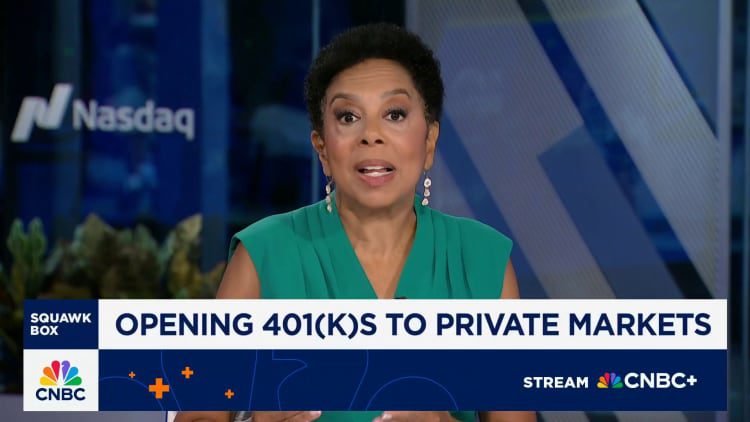Expanding Access to Private Investments in 401(k) Plans
The opportunity to broaden access to private investments within 401(k) plans is on the horizon, as financial experts weigh the potential advantages and disadvantages of such a shift. With the expected signing of an executive order, the landscape of retirement savings could change significantly, although many in the financial sector express caution regarding the risks involved for less experienced investors.
New Executive Order Opens the Door
A recent executive order is anticipated to authorize new categories of alternative investments in 401(k) plans. This directive, which guides the Department of Labor to evaluate its policies on non-publicly traded assets, could allow various investment options, including real estate and cryptocurrencies, to be included in retirement savings accounts.
These alternative assets, often referred to as private investments, encompass equity stakes and debt in companies that do not trade on public exchanges. Traditionally, institutional investors like pension funds and wealth management firms dominate this market, but the potential inclusion of these assets in individual retirement accounts could democratize access.
The Complex Nature of Private Investments
Although this legislative move signals a shift in policy, it raises concerns about the complexity and risks associated with private investments. Financial advisors warn that many 401(k) investors lack the necessary knowledge to navigate these intricate options effectively. "Introducing sophisticated investments to inexperienced investors can lead to complications and potential losses," cautions a seasoned financial advisor.
Evaluating the Pros and Cons
The retirement plans market, particularly defined contribution plans like 401(k)s, boasts significant asset holdings, approximately $12.2 trillion by the first quarter of 2025, with $8.7 trillion designated for 401(k) accounts. Advocates suggest that adding private assets could enhance diversification and yield higher returns compared to traditional public investments.
"Long-term investors stand to gain from the inclusion of private assets in their portfolios," notes a spokesperson from a financial association. However, the inherent challenges of private investments—such as exit restrictions and high fees—are noteworthy. For instance, while the average expense ratio of an exchange-traded fund is around 0.51%, private equity firms typically charge a 2% management fee alongside a 20% share of profits.
The Need for Education in the Investment Community
Experts in the field emphasize the necessity for increased education around these investment options. "It’s essential to inform plan sponsors and investors about the characteristics and risks associated with private investments," stresses an employee benefits security advocate from the previous administration. Unlike publicly traded securities, private equity transactions often lack transparency, making vital information about fund performance hard to acquire.
Regulatory Considerations
The legal framework governing 401(k) plans mandates that plan sponsors act in the best interest of investors. If the Department of Labor endorses guidelines for alternative investments, it could alleviate potential legal concerns for plan administrators. This reassurance may encourage broader participation from retirement funds.
Gradual Adoption of Private Investments
Leading private equity firms are already developing products tailored for defined contribution plans, with some 401(k) administrators beginning to make these investments available. One major retirement service provider highlighted its plans to introduce private investment offerings, marking a significant evolution in retirement planning.
Despite these advances, industry experts predict a slow rollout, estimating it may take three to five years for private investment options to gain a foothold in the market. Target-date funds may serve as the initial platform for these offerings, as they provide a mix of investment types that can adjust over time as the retirement date approaches.
As the landscape of 401(k) plans shifts, both retirement plan administrators and individual investors must navigate this complex new terrain with care.
